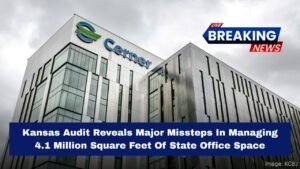The future of Missouri’s iconic sports teams—the Kansas City Royals and Kansas City Chiefs—is stirring up discussions not only in the state legislature but also among downtown Kansas City business leaders.
At the center of these conversations is the proposed move for a new stadium, which has ignited debate about the impact it would have on the city’s growth, local economy, and housing market.
At a KC Downtowners Luncheon held recently, business leaders expressed their opinions, with many emphasizing that the decision is not just about sports but also about affordable housing and the city’s long-term development.
This article takes a closer look at how Kansas City business leaders are reacting to the Missouri stadium vote, and what it means for the city’s future.
The Importance of Keeping the Teams in Jackson County
The Missouri state legislature has been discussing various potential locations for the new stadium, with Jackson County remaining a central focus. Many business leaders from the downtown area are in favor of keeping the Royals and Chiefs in Jackson County, citing the long-term benefits to the local economy.
Kelley Hrabe, a multifamily housing developer, made an important point during the KC Downtowners Luncheon, highlighting that the investment made in this stadium will likely last anywhere between 60-100 years.
He believes that the decision should be made with the goal of doing it right, ensuring the stadium benefits the area for generations to come.
| Key Points | Details |
|---|---|
| Investment Lifespan | 60-100 years |
| Location Support | Keeping teams in Jackson County |
| Economic Impact | Long-term revenue for local economy |
| Business Leader Opinion | Do it right and ensure benefits for future |
Affordable Housing a Key Focus for Downtown
While the debate over the stadium’s location continues, another important issue on the table is affordable housing. Jan Marcason, a former Kansas City councilmember, stated that the development in downtown Kansas City is progressing well and the addition of a stadium would be the “icing on the cake” for the area’s growth.
With housing developers and business investors increasingly looking at downtown, the future of the area relies not only on sports infrastructure but also on creating a thriving residential and business community.
Affordable housing in the downtown area is becoming a key issue for those who both live and work there. The increasing need for housing alongside commercial and recreational developments is creating a delicate balance. The integration of affordable housing options will be crucial to maintaining the city’s vibrancy and accessibility for all residents.
A Baseball Stadium in Downtown – A Game-Changer for the Local Economy
The potential of having a baseball stadium in downtown Kansas City could be a major economic game changer. Eddie Crane, a local resident, expressed his enthusiasm for the idea of a stadium located just six blocks from his home, in Washington Square.
For Crane and many others, a downtown stadium could increase foot traffic, boost local businesses, and generate significant revenue for the surrounding shops, restaurants, and entertainment venues.
According to Zach Molzer from Molzer Development, a baseball stadium would contribute positively to the local economy by supporting small businesses and encouraging people to spend more in the area, from dining to shopping and entertainment.
The inclusion of such a venue would also enhance downtown’s appeal for investors and residents, making it a hub of activity and fostering a dynamic local economy.
| Impact of a Downtown Stadium | Details |
|---|---|
| Economic Growth | Boost local businesses, restaurants, and shops |
| Revenue Generation | Significant increase in revenue for local economy |
| Local Employment | More job opportunities for residents |
Uncertainty and Frustration: Lack of Concrete Plans
Despite the enthusiasm for a downtown stadium, there is also a sense of frustration among some residents who feel the process is moving too slowly. Jason Osborne from Rosemann & Associates pointed out that Kansas and Clay County are still contenders for the new stadium location, and the city is facing uncertainty in terms of where the stadium will be built.
This ongoing indecision has led some residents, like Eddie Crane, to express dissatisfaction with the lack of concrete plans.
Crane remarked that the situation seems to be dragging on and that there should be clearer communication, allowing all stakeholders to come to a resolution. “We’re all adults. You can easily present a plan, come to a conclusion, and move forward as a collective,” he said.
Senate Bill 3: A Step Forward for Stadium Funding
One of the key developments in this ongoing debate was the passage of Senate Bill 3, also known as the Show-Me Sports Investment Act. The bill, which was passed by Missouri lawmakers, aims to provide funding to keep both the Royals and Chiefs in Missouri.
Business leaders, including Jan Marcason, expressed their excitement about the state support provided through the bill. However, it’s important to note that while the bill has passed, final decisions on the stadium location are still pending.
The bill’s passage brings some certainty to the future of the stadium, but the ultimate decision on its location will likely depend on ongoing negotiations with local stakeholders in both Kansas and Missouri.
The future of the Kansas City Royals and Kansas City Chiefs stadiums remains a hot topic for discussion. While Missouri state leaders are debating the best location, downtown Kansas City business leaders are more concerned with ensuring the project benefits the local economy and addresses housing needs.
The addition of a baseball stadium in downtown Kansas City could have a tremendous impact, fostering economic growth, supporting local businesses, and increasing jobs in the area. However, the decision-making process continues to cause frustration for some, as clear plans have yet to emerge.
Ultimately, Kansas City is at a pivotal moment in its development, and how the stadium debate unfolds will significantly shape its future.




